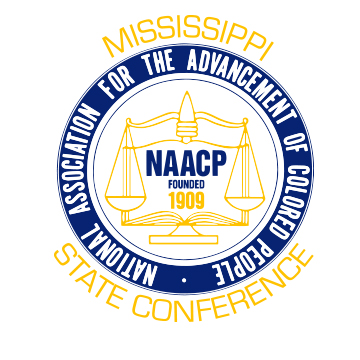Georgia Justice
The Supreme Court will review a case of blatant racism by prosecutors. For once, there’s a paper trail.
Caption:Prosecutors highlighted each black prospective juror’s name in green and wrote that the green highlighting “represents blacks.”
2015/5/27-The prosecutors seeking to send Timothy Tyrone Foster to death row went about their job in a curious manner. During jury selection, they highlighted each black prospective juror’s name in green—on four different copies of the jury list—and wrote that the green highlighting “represents blacks.” On each black juror’s questionnaire, prosecutors circled the response “black” next to a question about race. They also referred to three black jurors as “B#1,” “B#2,” and “B#3” in their notes. Finally, the prosecution’s investigator ranked each black juror against the others—in case “it comes down to having to pick one of the black jurors.”
The prosecutors struck each black candidate, one by one, from the jury pool until none remained.
At the end of the trial, prosecutors asked the jury to impose the death penalty on Foster, to “deter other people out there in the projects.” The all-white jury convicted Foster of murder and sentenced him to death.
Foster, a black man, appealed his conviction to the Georgia Supreme Court. Striking black jurors on account of their race is unconstitutional, and Foster believed he deserved a new trial. But the Georgia Supreme Court rejected his claim. Prosecutors had not “demonstrated purposeful discrimination” in striking black jurors, the court held. There was no racial bias in the prosecution of Timothy Tyrone Foster. His execution could move forward.
On Tuesday, the U.S. Supreme Court announced it will review the Georgia Supreme Court’s decision. The case, Foster v. Humphrey, gives the justices a chance to correct a gross miscarriage of justice—the insidious racism that so often infects the prosecution of black defendants. A victory for Foster could put a dent in the kind of misconduct that unscrupulous prosecutors use to put black defendants behind bars.
A victory for Georgia, however, would be a huge setback for the criminal justice system. It could give prosecutors across the country free rein to employ the kind of warped Southern justice that helped send Foster to death row.
The Supreme Court articulated the current standard governing jury selection in the 1986 case Batson v. Kentucky. The court held that attorneys for both the prosecution and the defense may make a certain number of “peremptory challenges”—that is, they can strike prospective jurors during voir direwithout giving a cause. However, prosecutors may not strike jurors on account of their race. Such race-based strikes, the court held, violate the defendant’s constitutional guarantee of equal protection, and undermine “public confidence in the fairness of our system of justice.” (Since then, the court has alsobarred sex discrimination during jury selection, and the 9th Circuit has barred sexual orientation discrimination as well.)
But Batson has a problem. After the defendant has claimed the prosecution struck a juror on account of his race, the prosecution can put forward a race-neutral explanation for its decision. Then the trial judge must decide whom to believe. Higher courts must show “great deference” for the trial judge’s decision on any Batsonchallenge. In practice, this rule means that prosecutors can usually toss out some pretext for striking a black juror. And if the trial judge buys it, the defendant must prove to an appeals court—sometimes years later—that the prosecutor’s pretext masked a racist mindset.
Because it’s so difficult to prove a state of mind, the Supreme Court has gradually allowed judges to look for clues that prosecutors struck jurors on account of their race. In one case out of Texas, the court cried foul when prosecutors used their peremptory strikes to exclude a stunning 91 percent of eligible black jurors at the trial of a black man. The court also noted some of the tricks the Texas prosecution used to keep blacks out of the jury. When a number of blacks sat toward the front of the room where the jurors were being chosen, for instance, the prosecutor “shuffled”—that is, rearranged where the candidates sat. Prosecutors usually evaluate potential jurors at the front of the jury panel first, so people toward the back are more likely to be dismissed. The prosecutor clearly shuffled the jury to move blacks from the front to the back. (Somehow, this is legal under Texas law.)
Even worse, the prosecution attempted to dupe black jurors into disqualifying themselves. When querying prospective jurors about their opinion on capital punishment, the prosecution phrased the question graphically to 53 percent of blacks. (The so-called graphic script involved an explanation that, if sentenced to death, the defendant would be “taken to the death house and placed on a gurney and injected with a lethal substance until he is dead.”) To 94 percent of whites, the prosecution said only that it was “actively seeking the death penalty.” Clearly, the prosecution hoped that blacks would reflect some ambivalence about capital punishment after hearing about the “death house”—at which point the prosecution could strike them for opposing the death penalty, not for being black.
In 2008, faced with indisputable evidence of prosecutorial racism hidden behind a patina of neutrality, the court gave Batson an update in Snyder v. Louisiana. Writing for the court, Justice Samuel Alito (yes, that Alito) wrote that defendants need only prove a peremptory strike was motivated “in substantial part by discriminatory intent.” In other words, racism didn’t need to be the sole factor behind the strike—just a major part of it. And Alito cracked down on the obvious pretenses prosecutors employ, allowing judges to critically analyze “suspicious” justifications for striking black jurors.
The justifications for striking every black juror from Foster’s trial aren’t merely suspicious. They’re laughable. For example, several black jurors were purportedly struck for having sons about Foster’s age, while white jurors with sons the same age were welcomed. And in light of the prosecution’s race-obsessed notes—which the trial court actually tried to keep secret—Foster should have a strong case at the Supreme Court.
But it’s disturbing to think about how many other black men currently sit behind bars because they couldn’t find a paper trail to prove their prosecutor’s racism. All-white juries are significantly more likely to convict black defendants than a jury with even one black person. Prosecutors know that. They also know that as long as they keep their racist strikes subtle, they’re unlikely to be found out—and that even if they are, they probably won’t face punishment. Foster was convicted in 1987; it took him nearly three decades bring his case to the Supreme Court. Racist prosecutors break the law, and the target of their lawlessness face execution. That’s Georgia justice in action.
Source: Slate



